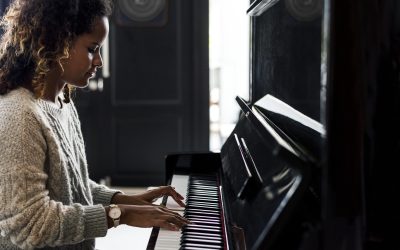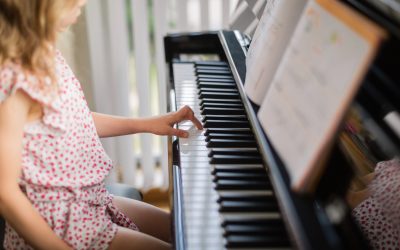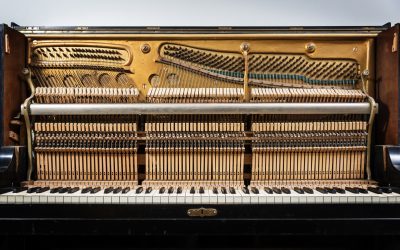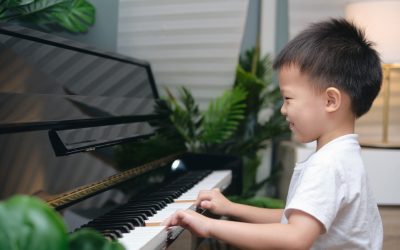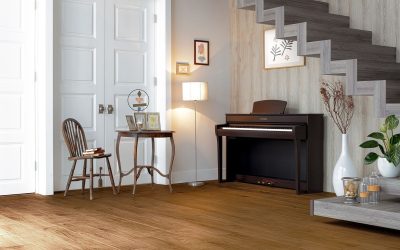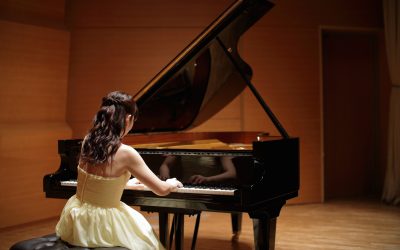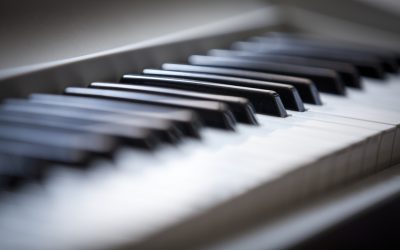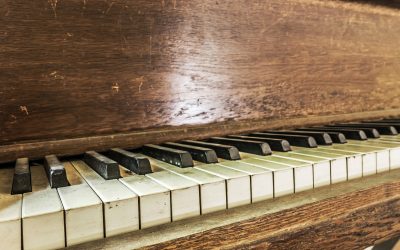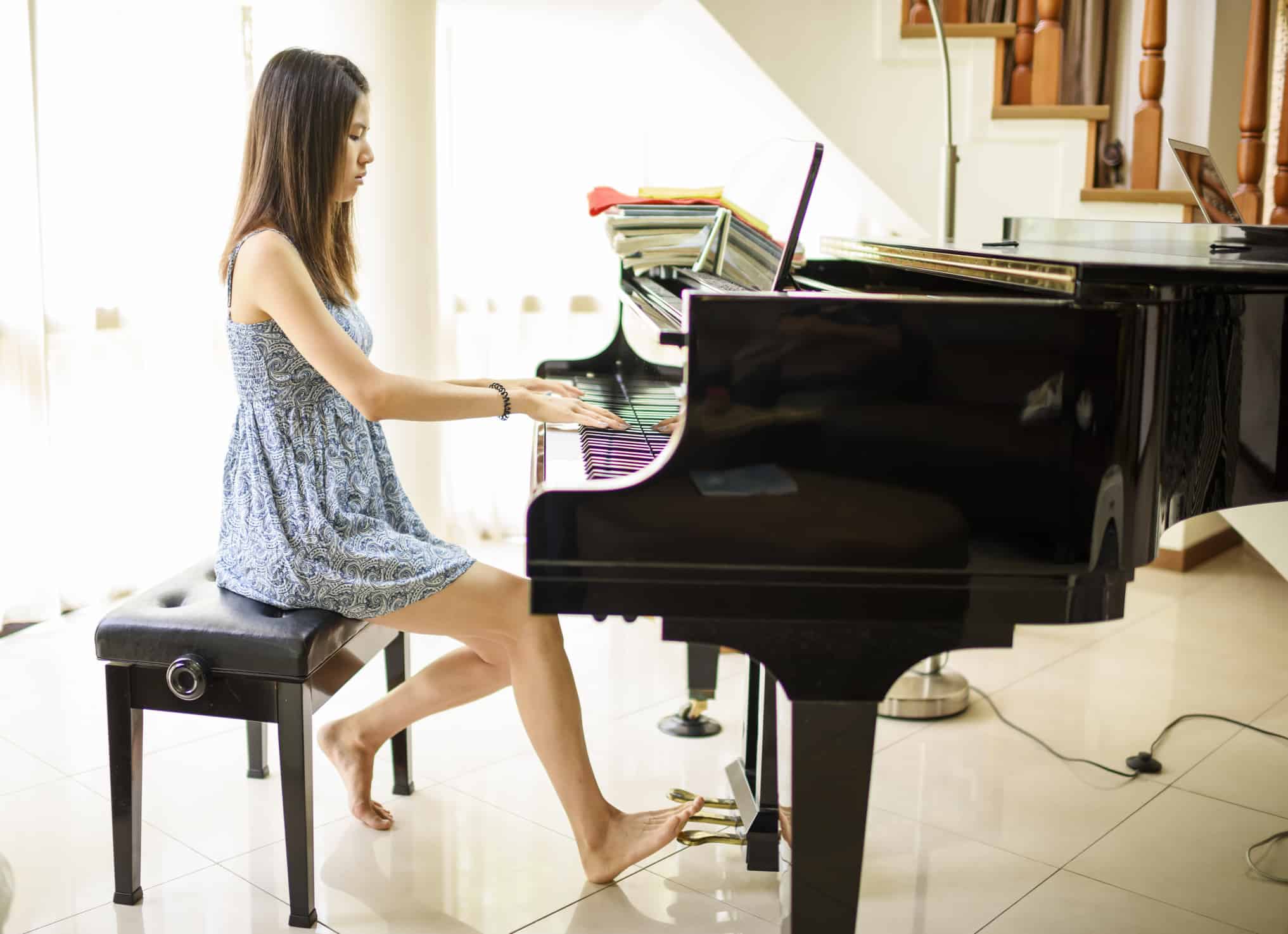
The cost of a piano varies widely based on its type, brand, condition (new or used), and the intricacies of craftsmanship involved in its manufacturing. In this article, our piano experts share price ranges for the main types of pianos, explain what impacts the pricing of these pianos, and share insights into which type of piano players should consider an entry-level piano vs. a high-end piano and why.
Quick Links:
What are the Different Types of Pianos?
Upright Piano Cost
Grand Piano Cost
Baby Grand Piano Cost
Digital Piano Cost
Used Piano Cost
Yamaha Grand Piano Cost
Concert Grand Piano Cost
What Affects the Cost of a Piano?
Cost of Piano Maintenance
Buying an Entry-Level vs. Mid-Level vs. High-End Piano
What are the Different Types of Pianos?
Pianos come in a variety of shapes and sizes, each with its own unique set of characteristics suited to different musical needs and spaces. The most traditional categories are upright and grand pianos, which are both acoustic, with digital pianos being a popular and affordable modern alternative.
- Upright pianos, also known as vertical pianos, feature strings that run vertically, allowing them to occupy less floor space. They are popular in homes and schools for their compact footprint and affordability, making them an excellent choice for beginners and hobbyists. Their sound can vary significantly depending on the size and construction, with larger uprights typically providing a richer tone.
- Grand pianos are distinguished by their horizontal string alignment and open lid, allowing for a more dynamic sound projection. Within the grand piano category, sizes range from baby grands, which are the smallest grand pianos and often fit comfortably in residential spaces, to concert grands, which are the largest and most powerful pianos designed for professional concert hall performances. Intermediate sizes cater to various performance and space requirements.
- Digital pianos represent a modern alternative to acoustic pianos, combining the keyboard layout and playing experience of an acoustic piano with digital sound production. These instruments offer the advantage of volume control, headphone outputs for private practice, and often, a variety of digital sounds and features like recording and MIDI connectivity.
Cost of Upright Pianos
Upright pianos, also known as vertical pianos, are popular for their compact size, making them ideal for home use. Prices for new upright pianos can range from $3,000 to $20,000. The variation in price is largely due to the quality of materials, brand reputation, and the level of craftsmanship. Brands like Yamaha and Kawai are known for producing high-quality upright pianos in the mid-price range, while Steinway & Sons and Bechstein offer premium options at higher prices.
The cost of an upright piano varies significantly depending on factors such as brand, model, materials used, craftsmanship, and whether the instrument is new or used. Here’s a general overview of what you might expect:
Entry-Level Upright Pianos
- New: Entry-level upright pianos, suitable for beginners or casual players, typically range from $3,000 to $6,500. These pianos are often mass-produced with materials and components designed to keep costs down while still providing a satisfactory playing experience.
- Used: The price for used entry-level upright pianos can vary widely based on condition, age, and brand but might start as low as $500 to $2,000.
Mid-Range Upright Pianos
- New: Mid-range upright pianos, which offer better sound quality and more durable construction, can cost between $6,500 and $15,000. These pianos are suitable for serious students and experienced players who seek a higher quality instrument without the space or budget for a grand piano. High-quality brands such as Yamaha will sometimes offer mid-range pianos (for instance, the Yamaha B2) in this price range for a more affordable option compared to their higher-end piano models.
- Used: Mid-range used upright pianos can vary greatly in price depending on their condition and age but might range from $3,000 to $10,000.
High-End Upright Pianos
- New: High-end or professional upright pianos can cost from $15,000 to $30,000 or more. These instruments are often comparable in sound quality to grand pianos, using superior materials and craftsmanship. Brands like Yamaha, Kawai, Steinway & Sons, and Bechstein are well-known for producing high-quality upright pianos in this category.
- Used: The price for used high-end upright pianos can start around $8,000 and go up, depending on the instrument’s condition, brand, and model.
Cost of Grand Pianos
Grand pianos are distinguished by their horizontal soundboards and strings, offering superior sound quality and a more responsive touch compared to uprights. Baby grands, the smallest grand pianos, can cost between $10,000 and $30,000 new, while concert grand pianos, the largest and most premium-grade pianos, can exceed $100,000. Renowned brands in this category include Yamaha, Steinway & Sons, Bösendorfer, and Fazioli, which are all known for their exceptional craftsmanship and sound.
The cost of a grand piano varies widely based on factors like size, brand, craftsmanship, materials, and whether the piano is new or used. Here’s an overview of the general pricing for grand pianos:
Entry-Level Grand Pianos
- New: Prices for new entry-level grand pianos start around $8,000 to $20,000. These instruments are typically smaller in size (baby grand pianos), and while they offer the aesthetic and some of the tonal qualities of larger grands, they are more affordable and suitable for home use and smaller venues.
- Used: Used entry-level grand pianos are generally more affordable and can be a great choice for beginners or those with budget constraints. They often range between $3,000 to $6,000, depending on the condition and market availability.
Mid-Range Grand Pianos
- New: Mid-range grand pianos, which offer better sound quality and larger sizes, can cost between $20,000 and $60,000. These pianos are designed for more serious musicians and can be found in homes, schools, and smaller concert venues. They strike a balance between size, quality, and price, making them popular among a wide range of users.
- Used: For those looking for a balance between quality and price, mid-range used grand pianos might cost around $15,000 to $25,000. These instruments provide better sound quality and craftsmanship than entry-level pianos and are suitable for serious students and experienced players at more budget-friendly prices.
For more information about buying a used piano, check out our Used Piano Buying Guide.
High-End and Concert Grand Pianos
- New: High-end grand pianos, including concert grands, which are the largest grand pianos and offer the best sound quality, typically range from $70,000 to over $200,000. Premium brands like Steinway & Sons, Bösendorfer, and Fazioli are renowned for their exceptional craftsmanship and materials, contributing to their high prices. Concert grands are used by professional musicians and can be found in major concert halls around the world.
- Used: High-end brands like Steinway & Sons, Yamaha, and others are known for their superior quality and can fetch much higher prices, even when used. Prices for these premium instruments can range widely based on their condition, model, and age but expect them to be significantly higher than entry-level and mid-range pianos, sometimes reaching up to 45% – 48% of their original new price depending on the brand’s market value.
How Much do Baby Grand Pianos Cost?
The cost of a new baby grand piano can vary significantly based on brand, quality, materials, and craftsmanship. As a general guide, prices for new baby grand pianos can start around $10,000 for entry-level models from less expensive brands. Mid-range models from well-regarded manufacturers can range between $20,000 and $50,000. For high-end luxury brands known for their exceptional craftsmanship and superior sound quality, such as Steinway & Sons, prices can start at $60,000 and go upwards of $100,000.
Used baby grand pianos can be a more affordable option, with prices depending on the condition, age, brand, and model of the piano. It’s also important to factor in additional costs such as delivery, tuning, and potential repairs or maintenance when considering the purchase of a baby grand piano.
How Much do Digital Pianos Cost?
Digital pianos offer a cost-effective and space-saving alternative to acoustic pianos. They replicate the sound and feel of traditional pianos using digital technology. Prices range from $2,000 for entry-level models to over $20,000 for high-end models that closely mimic the touch and tone of acoustic pianos. Brands like Yamaha Clavinova, Roland, and Kawai are leaders in the digital piano market, offering a range of models suited to different budgets and requirements.
How Much do Used Pianos Cost?
Buying a used piano presents an opportunity for savings, however, it also requires more discernment considering the condition of the piano and its maintenance history. Used uprights and digital pianos can be found ranging from $1,000 to $17,500, while baby grands and grands may range from $3,000 to over $50,000 for well-maintained, high-end brands. The depreciation factor plays a significant role in the price of a used piano, especially for high-quality brands which tend to maintain their value over longer periods of time.
For more information about buying a used piano, check out our Used Piano Buying Guide.
How Much Does a New Yamaha Grand Piano Cost?
The cost of a new Yamaha grand piano varies widely depending on the model and size. Yamaha offers a range of grand pianos, from the more compact baby grand models to the full-sized concert grands. Prices can start from around $15,000 for the smaller models, such as the GB1K, which is Yamaha’s entry-level grand piano. Mid-range models like the C Series can range between $25,000 to $50,000, while the higher-end CF Series concert grand pianos can exceed $100,000, with the top models potentially reaching up to $200,000 or more.
These prices are approximate and can vary based on the dealer, location, and any additional features or customizations. Yamaha’s reputation for quality and the extensive range of grand pianos they offer means there is likely a model that fits various skill levels and budgets. However, for the most accurate and current pricing, it’s best to consult with an authorized Yamaha piano dealer.
How Much Does a Concert Grand Piano Cost?
The cost of a concert grand piano significantly varies depending on the brand, model, materials, and craftsmanship involved, ranging from $40,000 to over $200,000. Concert grand pianos are the largest and most prestigious of all grand pianos, typically ranging from 7 to 10 feet in length. They are designed for professional concert hall performances, offering the highest level of sound quality and playability.
- Entry-Level and Mid-Range Brands: For more budget-friendly or mid-range concert grand pianos, prices can start from around $40,000 to $70,000. These pianos are often used in schools, churches, and community centers, where they provide excellent sound quality for a wide range of uses.
- High-End Brands: At the top end of the market, brands like Steinway & Sons, Bösendorfer, and Fazioli are renowned for their exceptional concert grand pianos. Prices for these premium instruments can range from $150,000 to over $200,000 for standard models. Special editions and pianos with custom finishes or materials can cost significantly more, sometimes exceeding $300,000.
Factors Influencing Piano Cost
- Size: The larger the piano, the more materials and labor are typically required, which can increase the cost.
- Brand Reputation: High-end brands with a long history of craftsmanship and innovation tend to charge more for their pianos. High-end brands like Steinway & Sons and Fazioli invest heavily in the quality of materials and handcrafted precision, contributing to their premium prices. Brands like Yamaha offer a range of pianos that balance quality and affordability, utilizing handcrafting techniques in their higher-end lines and mass-production methods for mid-range models.
- Material Quality: The quality of wood, strings, and other materials used can greatly affect the sound and durability of the piano, contributing to its cost.
- Craftsmanship: Handmade pianos, or those with a high degree of handcrafting, tend to be more expensive due to the labor involved.
- Innovation: Pianos that incorporate new technologies or design philosophies may also command higher prices.
Cost of Maintaining a Piano
Maintaining a piano is crucial for preserving its sound quality and lifespan. Regular tuning, which should be done at least once a year, costs between $100 and $200. Additional maintenance, including action regulation, voicing, and occasional restringing or hammer replacement for older pianos, can add to the cost. Over several decades, maintenance costs can accumulate to a significant sum, affecting the total cost of ownership.
Given the substantial investment required for a concert grand piano, potential buyers often spend considerable time researching and playing different models before making a decision. Consulting with professional pianists, technicians, and reputable dealers can provide valuable insights into selecting the right instrument.
When to Buy an Entry-Level vs. Mid-Range vs. High-End Piano?
Deciding whether to purchase an entry-level, mid-range, or high-end piano involves considering several key factors, including your budget, experience level, commitment to playing, and the intended use of the piano. Here’s a guide to help you determine which category of piano suits your needs:
1. Budget
The most immediate consideration is your budget. Entry-level pianos are the most affordable, making them a good choice for beginners or those with a limited budget. Mid-range pianos are more of an investment and offer better sound quality and durability. High-end pianos are premium instruments with the highest quality in terms of sound, touch, and craftsmanship, suitable for those who are willing to invest a significant amount in their musical journey.
2. Experience Level and Commitment
- Beginners: If you or the person who will be using the piano is a beginner, an entry-level piano might be the most appropriate choice. It allows you to start learning without a huge financial commitment. Many beginners start with digital pianos or entry-level upright pianos.
- Intermediate to Advanced Players: If you have been playing for some time and are committed to improving your skills, a mid-range piano could be a worthwhile investment. These pianos offer better sound quality and more nuanced touch response, which can enhance your playing experience and support your development.
- Professional Musicians or Serious Enthusiasts: For those who are deeply committed to their craft or pursue music professionally, a high-end piano might be necessary. These instruments offer the best in sound quality, touch, and expressiveness, providing an unparalleled playing experience.
3. Intended Use
- Home Practice: For casual playing or practice at home, an entry-level to mid-range piano can be sufficient. These instruments offer good sound quality and durability for everyday use.
- Performing: If you plan to perform publicly or record music, a mid-range to high-end piano might be required. The superior sound quality and touch sensitivity of these pianos can significantly enhance live performances and recordings.
- Teaching: Music teachers might opt for mid-range pianos due to their balanced quality and affordability. However, if you teach advanced students or specialize in certain genres, a high-end piano could be beneficial.
4. Space Considerations
The size of your living space can also influence your choice. Entry-level upright pianos and digital pianos take up less space, while grand pianos require more room. Ensure you have adequate space not just for the piano but also for comfortable seating and movement.
5. Future Considerations
Think about whether the piano you choose will meet your needs in the long term. Beginners might outgrow an entry-level piano as their skills advance, requiring an upgrade. Conversely, investing in a mid-range or high-end piano from the start can be a long-term investment that grows with you.
Final Thoughts
Deciding on the right piano involves a balance of practical considerations and personal aspirations. An entry-level piano might be the right start for beginners and those with budget constraints. A mid-range piano represents a middle ground, offering quality without the high-end price tag, suitable for serious students and hobbyists. A high-end piano, with its superior craftsmanship and performance, is best suited for professionals and serious enthusiasts committed to achieving the highest standard of music. Always try different pianos within your budget range to find the one that best suits your touch and sound preferences.
If you’re not sure what type of piano is right for you, we encourage you to speak with one of our piano experts by calling or submitting a contact form on our website.
About the Author
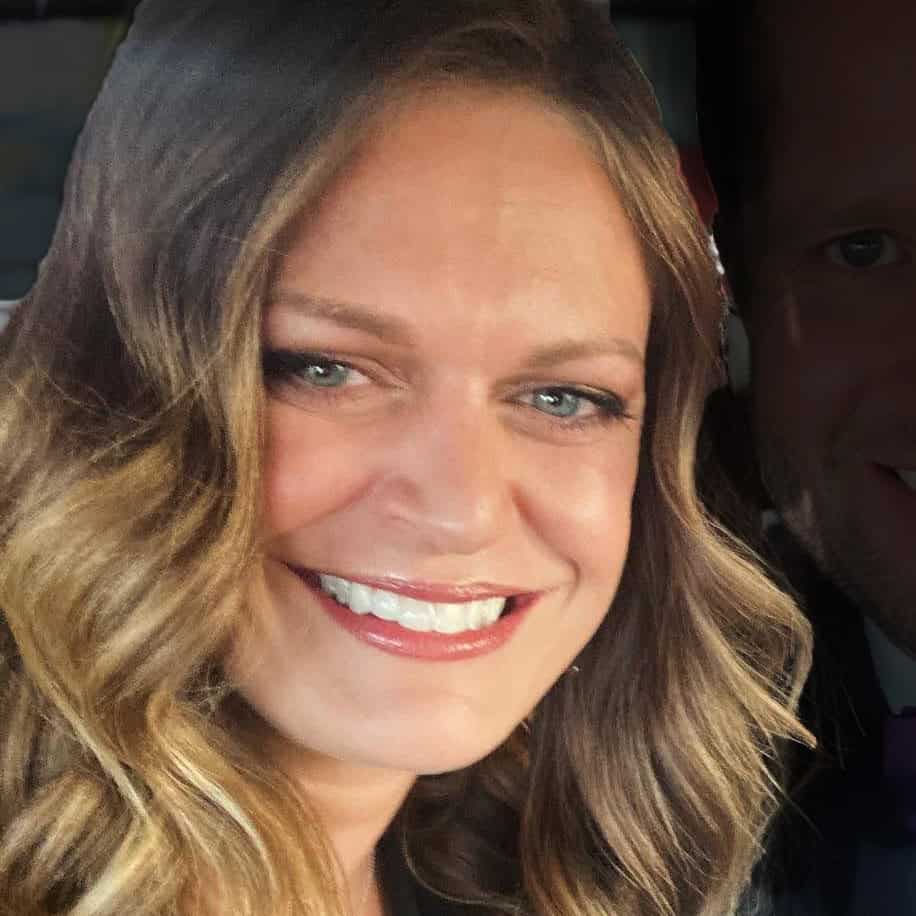
Mikelle Despain
Piano Insights Author
Mikelle is a classically trained pianist and piano teacher who has been in the piano retail industry for over 20 years. Her dream piano is a Yamaha S5X. She currently provides expert insights for Piano Gallery to share information and advice for buying, playing, and enjoying the piano. When she's not writing or playing piano, she's spending time with her four kids, tending her vegetable garden, boondock camping, hiking, or cooking for friends.
Further Reading...
Largest Collection of Quotes About Playing the Piano
When you're a pianist, playing the piano isn't just a hobby, it's a lifestyle. Even causal players feel a deep, meaningful connection to the instrument. In this article, we share some of our favorite quotes about playing the piano, because #IYKYK Favorite Piano Quotes...
Encouraging Yourself to Play Piano More as an Adult
Playing the piano is rewarding, not only for the relaxation it provides, but also for the sense of accomplishment, confidence, and stress release if offers. However, for many adults, it can feel frivolous to take the time to play the piano. With so many other...
How to Keep Your Child Motivated to Practice the Piano
You picked the perfect piano, hired a highly-rated piano teacher, and bought your child a stack of books to learn how to play the piano—but one thing’s missing: their motivation to practice. Even if a child is super excited to learn to play the piano, there are some...
Top Health Benefits of Playing the Piano
There are many reasons people choose to play the piano—for pleasure, skill development, stress relief, and more. In this article, we explore the health and wellness benefits of playing the piano. How Playing the Piano Supports Health & Wellness Playing the piano...
Upright vs. Grand Pianos: Differences & Benefits
The choice between an upright or grand piano usually comes down to size, price, aesthetic, or all three. However, for those piano buyers who have wiggle room (literally and figuratively) in choosing a piano, the conversation about the difference between an upright and...
Yamaha U Series Upright Pianos
Yamaha is a world-renowned name in pianos because of their quality, reliability, and beauty. With a rich history of piano craftsmanship beginning in 1887, the heritage of Yamaha has made it one of the most respected names in the industry. About Yamaha’s U Series...
Yamaha Clavinova Digital Pianos: A Complete Guide
The Yamaha Clavinova is a world-renowned digital piano manufactured to emulate the touch, feel, and expression of an acoustic grand piano while offering a wide range of additional features, technology, and capabilities. In this article, we answer some of the most...
Ideas for Planning an Engaging Piano Recital
Piano recitals, especially for younger students, often have a reputation of being a little blasé. However, with the right preparation and innovation, a piano recital can be a captivating, elevated experience for its attendees. 10 Tips for a More Engaging Piano Recital...
Understanding the Difference Between a Keyboard and a Digital Piano
If you're new to the world of music or considering an upgrade from your current instrument, you might be wondering about the differences between a keyboard and a digital piano. While both instruments share similarities, they also have distinct characteristics that...
How Digital Pianos Can Enhance Music Education
For new or experienced piano students, a digital piano can be an exceptional tool for enhancing music education. This is especially true for new or young piano students. In our blog “Best Pianos for Beginners,” we further discuss this fact as we discuss our choice of...
How to Clean and Maintain Your Yamaha Clavinova
While Yamaha Clavinova digital pianos require less maintenance than digital pianos as they don’t require annual tuning, regular cleaning and maintenance can help extend the life and performance of a Clavinova. In this step-by-step guide, we walk you through the...
About Free Pianos: What to Know Before Accepting a Free Piano
If you are in the market for a pre-owned piano, you may have seen many classified ads for pianos people are giving away for free. But why are there so many free pianos and should you be wary of accepting a free piano from a friend, family member, or neighbor? Why Are...
